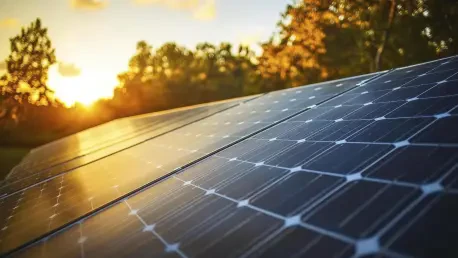The prospect of quantum dots transforming solar energy efficiency represents one of the most exciting developments in the field of renewable energy. A recent breakthrough has been made with the creation of a quantum photovoltaic dot that promises to deliver an energy generation rate nearly 200% greater than conventional solar panels. This significant leap forward, attributed to research led by Professor Chinedu Ekuma from Lehigh University, focuses on a novel quantum material—CuxGeSe/SnS. This material has been engineered specifically for use in intermediate band solar cells (IBSCs), presenting a solution to the perennial challenge of enhancing solar efficiency beyond current limitations. By incorporating quantum properties, researchers hope to revolutionize solar technology, thus moving towards more sustainable energy solutions. As this advancement is still in the proof-of-concept stage, industry experts and researchers alike are closely monitoring how this technology will integrate into existing solar applications, potentially redefining future energy landscapes.
Quantum Dots and Solar Technology
Quantum dots are set to play a critical role in the next generation of solar technology due to their unique capacity to capture and convert more solar energy. The newly developed material, CuxGeSe/SnS, employs intermediate band states in its electronic structure, allowing it to perform an energy conversion that goes beyond traditional constraints such as the Shockley-Queisser limit. This achievement stems from the innate properties of the material, which include subband gaps that are highly efficient in sunlight absorption and charge carrier generation. Constructed from a two-dimensional Van der Waals material, which uses specific atomic compositions and crystalline planar configurations, this development aims to double the efficiency of common photovoltaic cells. The importance of such an innovation lies in its potential to utilize solar energy far more effectively, providing a robust alternative to reducing dependency on non-renewable energy sources.
Realizing quantum efficiency levels between 110% to 190%, this technology surpasses the capabilities of existing solar cells capped at 100% quantum efficiency. The use of two-dimensional materials in facilitating this transformation is noteworthy, as it highlights the possibilities of customizing atomic compositions to achieve unprecedented energy conversion rates. Through efficient absorption and conversion of light, quantum dots can fundamentally alter the capacity of photovoltaic technologies. With ongoing developments, these efforts are paving the way for quantum dots to solidify their position in future renewable energy technologies, promising significant advancements in energy accessibility and efficiency.
The Future of Quantum Dot Solar Cells
Despite being a nascent technology, quantum dot solar cells exemplify the future of solar energy through their efficiency and potential applications. The research team’s innovative approach uses celadon cells, maximizing the absorption and conversion of both sunlight and additional ambient energy sources such as reflected light and heat. This sophisticated technique illustrates the potential for increased optical production across different wavelengths, positioning these quantum dot materials as viable candidates for broad photovoltaic applications. As researchers aim to integrate these materials into actual solar cells, the prospects of this technology align with global efforts to shift away from carbon-intensive energy sources in favor of renewable alternatives.
As this technology transitions from concept to application, considerable research is still needed to understand the scalability and practicality of integrating quantum materials into current solar frameworks. Nonetheless, this technological advance signals a shift towards smarter energy capture solutions. The ability to significantly enhance energy efficiency without solely relying on conventional light absorption techniques reinforces the importance of quantum materials in reshaping energy paradigms. Going forward, expanding the scope of quantum dot applications in solar energy offerings can lead to considerable improvements in energy sustainability, ultimately contributing to worldwide energy solutions that are cleaner and more efficient.
Harnessing the Potential of Quantum Efficiency
Quantum dots are poised to revolutionize solar energy efficiency, marking a significant development in renewable energy. Recent advancements showcase a quantum photovoltaic dot designed to boost energy generation rates nearly 200% compared to traditional solar panels. This breakthrough stems from research spearheaded by Professor Chinedu Ekuma at Lehigh University and centers around a cutting-edge quantum material known as CuxGeSe/SnS. Specifically tailored for intermediate band solar cells (IBSCs), this material could solve the ongoing challenge of improving solar efficiency beyond current technological constraints. Quantum properties are at the heart of this endeavor, promising to transform solar technology and drive more sustainable energy solutions. Although this technology is still in the proof-of-concept phase, experts and researchers are keenly observing its potential integration into existing solar applications, which might redefine future energy landscapes and contribute significantly to global clean energy objectives.









